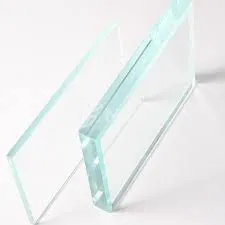The Versatile World of Reflective Glass Manufacturing
In the contemporary design landscape, reflective glass has emerged as a pivotal material, marrying aesthetics with functionality. As urban environments expand and evolve, the demand for innovative materials that are both visually appealing and energy efficient has surged. This is where reflective glass manufacturers step in, providing solutions that not only enhance the beauty of structures but also contribute to sustainability.
Reflective glass, characterized by its mirror-like surface that reflects a significant portion of light, is utilized in various applications ranging from skyscrapers to residential buildings. The process of manufacturing reflective glass involves a careful balance of technology, artistry, and rigorous standards of quality control.
Manufacturing Process
The manufacturing of reflective glass begins with the selection of high-quality raw materials, primarily silica sand, soda ash, and limestone, which are melted together at high temperatures to form glass. Once the basic glass is produced, the reflective properties are achieved by applying a thin metallic coating. This process typically involves a vacuum deposition technique where metals such as silver, titanium, or aluminum are deposited onto the surface during the glass production phase.
After coating, the glass undergoes rigorous testing to ensure that it meets international standards for durability and performance. This includes checks for UV resistance, thermal performance, and clarity. Manufacturers often focus on creating products that not only fulfill aesthetic desires but also perform exceptionally well under various environmental conditions.
Applications of Reflective Glass
Reflective glass is used in a wide variety of applications. In commercial architecture, it serves as a critical component for modern facade designs, contributing to buildings that are both visually striking and energy efficient. By reflecting sunlight, reflective glass minimizes the heat gain in buildings, thereby reducing the need for extensive air conditioning and making them more eco-friendly.
Additionally, reflective glass plays an essential role in residential applications. Homeowners appreciate the aesthetic appeal of reflective surfaces, as they can provide privacy without sacrificing natural light. In landscape design, reflective glass can be used to create stunning water features and sculptures that enhance outdoor spaces.
reflective glass manufacturer
Moreover, the automotive industry has also recognized the potential of reflective glass. From windshields to rear-view mirrors, the ability to reflect sunlight enhances driver safety and comfort. These applications further demonstrate the versatility of reflective glass, making it an integral component of modern design across various sectors.
Sustainability and Innovation
Reflective glass manufacturers are also at the forefront of sustainable innovations. In recent years, there has been a significant push towards developing eco-friendly products that minimize environmental impact. This has led to the creation of reflective glass that incorporates recycled materials and uses less energy in the manufacturing process.
Furthermore, advancements in technology, such as smart glass solutions, are changing the landscape of how reflective glass is used. Smart reflective glass can adjust its opacity based on environmental conditions, providing optimal light control and temperature regulation. This innovation not only boosts energy efficiency but also enhances comfort in living and working spaces.
Challenges and the Future of Reflective Glass Manufacturing
Despite the advancements in the industry, reflective glass manufacturers face several challenges. The fluctuating prices of raw materials and stringent regulations concerning environmental impacts pose ongoing challenges. However, these obstacles often spur innovation as manufacturers strive to develop more cost-effective and sustainable products.
As the architectural industry continues to evolve, the future of reflective glass manufacturing looks promising. With a growing emphasis on sustainability and energy efficiency, manufacturers are likely to explore new technologies and materials that further enhance the functionality of reflective glass.
In conclusion, reflective glass manufacturers play a crucial role in modern architecture and design. Through innovative processes and a commitment to sustainability, they are redefining the way we interact with our built environments. As urban landscapes continue to change, reflective glass will remain an indispensable element, reflecting not only light but also the ingenuity of contemporary engineering and design. The challenge for manufacturers will be to continue pushing the boundaries of what is possible, ensuring that reflective glass remains relevant in an ever-evolving industry.
 Afrikaans
Afrikaans  Albanian
Albanian  Amharic
Amharic  Arabic
Arabic  Armenian
Armenian  Azerbaijani
Azerbaijani  Basque
Basque  Belarusian
Belarusian  Bengali
Bengali  Bosnian
Bosnian  Bulgarian
Bulgarian  Catalan
Catalan  Cebuano
Cebuano  Corsican
Corsican  Croatian
Croatian  Czech
Czech  Danish
Danish  Dutch
Dutch  English
English  Esperanto
Esperanto  Estonian
Estonian  Finnish
Finnish  French
French  Frisian
Frisian  Galician
Galician  Georgian
Georgian  German
German  Greek
Greek  Gujarati
Gujarati  Haitian Creole
Haitian Creole  hausa
hausa  hawaiian
hawaiian  Hebrew
Hebrew  Hindi
Hindi  Miao
Miao  Hungarian
Hungarian  Icelandic
Icelandic  igbo
igbo  Indonesian
Indonesian  irish
irish  Italian
Italian  Japanese
Japanese  Javanese
Javanese  Kannada
Kannada  kazakh
kazakh  Khmer
Khmer  Rwandese
Rwandese  Korean
Korean  Kurdish
Kurdish  Kyrgyz
Kyrgyz  Lao
Lao  Latin
Latin  Latvian
Latvian  Lithuanian
Lithuanian  Luxembourgish
Luxembourgish  Macedonian
Macedonian  Malgashi
Malgashi  Malay
Malay  Malayalam
Malayalam  Maltese
Maltese  Maori
Maori  Marathi
Marathi  Mongolian
Mongolian  Myanmar
Myanmar  Nepali
Nepali  Norwegian
Norwegian  Norwegian
Norwegian  Occitan
Occitan  Pashto
Pashto  Persian
Persian  Polish
Polish  Portuguese
Portuguese  Punjabi
Punjabi  Romanian
Romanian  Russian
Russian  Samoan
Samoan  Scottish Gaelic
Scottish Gaelic  Serbian
Serbian  Sesotho
Sesotho  Shona
Shona  Sindhi
Sindhi  Sinhala
Sinhala  Slovak
Slovak  Slovenian
Slovenian  Somali
Somali  Spanish
Spanish  Sundanese
Sundanese  Swahili
Swahili  Swedish
Swedish  Tagalog
Tagalog  Tajik
Tajik  Tamil
Tamil  Tatar
Tatar  Telugu
Telugu  Thai
Thai  Turkish
Turkish  Turkmen
Turkmen  Ukrainian
Ukrainian  Urdu
Urdu  Uighur
Uighur  Uzbek
Uzbek  Vietnamese
Vietnamese  Welsh
Welsh  Bantu
Bantu  Yiddish
Yiddish  Yoruba
Yoruba  Zulu
Zulu 

